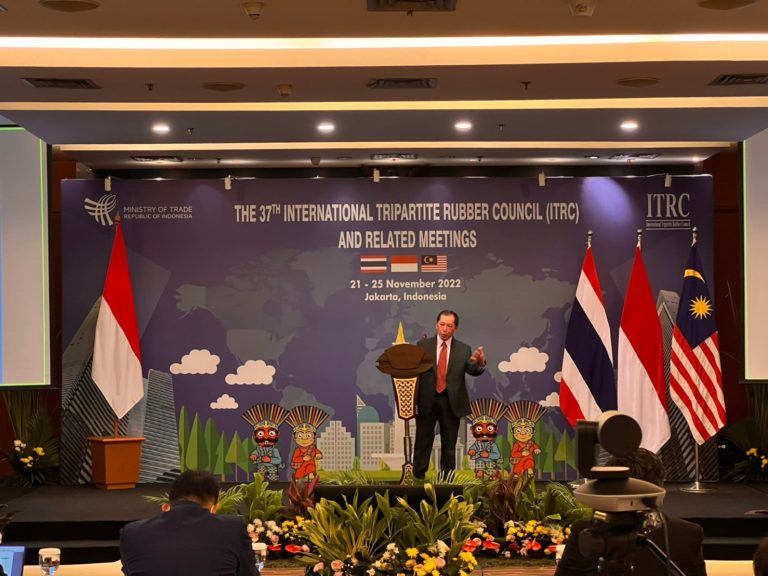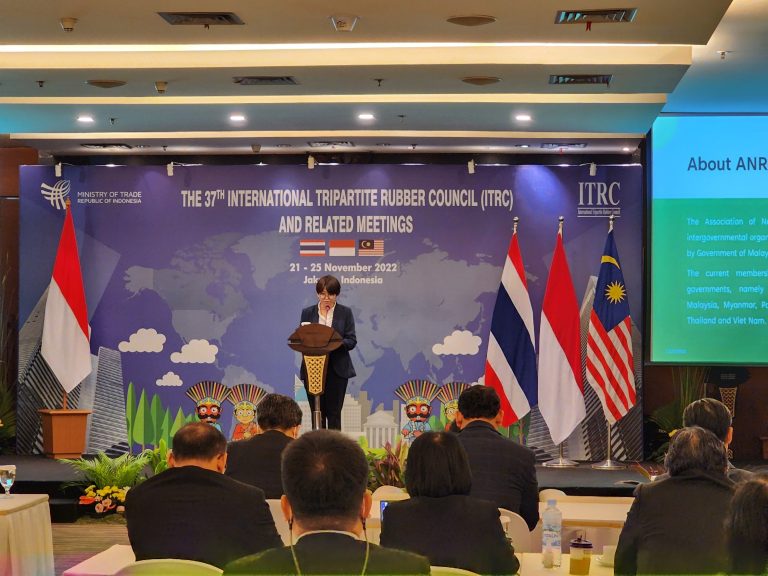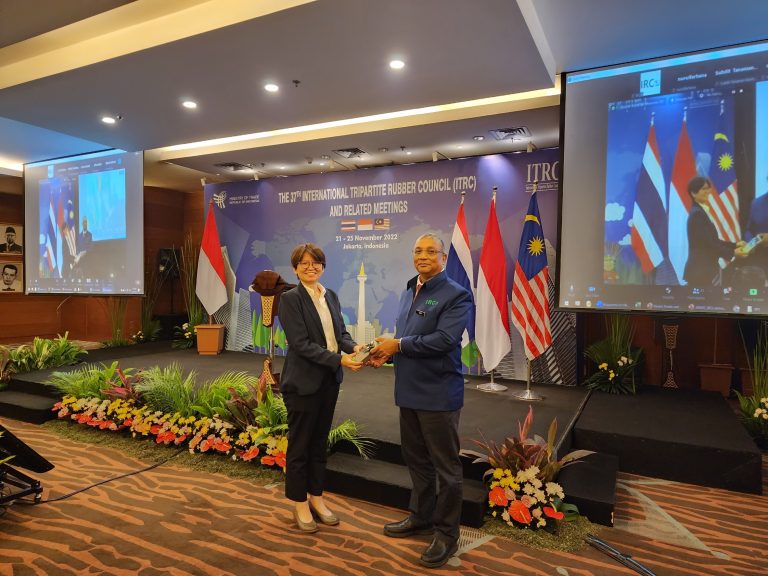



In collaboration with the Ministry of Trade of Indonesia, IRCo organised its fourth webinar in 2022, themed “Recent Trends & Outlook for the World Rubber Economy and Sustainable Price Mechanism”. The seminar was held physically in the Auditorium of the Ministry of Trade of Indonesia, Jakarta, Indonesia, on 23 November 2022.
Recent Trends and Outlook for the World Rubber Economy
By Prachaya Jumpasut, Ph.D.
As an eminent expert in rubber economics and Former Managing Director of the Rubber Economist Ltd. (2008-2021), Dr. Prachaya Jumpasut discussed the recent trends and outlook for the world rubber economy.
One of the most prominent threats to the natural rubber (NR) industry has been the Covid-19 pandemic. The first case of Covid-19 was reported in 2019 in China and then spread to the entire world, severely affecting public health and resulting in disruptions in the NR supply chain and global demand for rubber.
Although a sharp decline in demand was seen in 2020, the rate of recovery that followed was sharper. Global rubber consumption had also been increasing before it levelled off during the Covid-19 pandemic. However, the growth rate of demand has been on a declining trend over the years, 1900-2020. Tires and tire products remain the largest industry for NR consumption.
It was highlighted that prices are a critical variable that influences NR supply and demand. While NR prices and supply/demand reinforce each other, other factors have a role to play, namely currency exchange, other commodities and oil prices. Especially, soaring oil prices are associated with high transportation costs, and thus, higher (lower) prices of crude oil often translate into higher (lower) NR prices. NR prices are expected to decline in 2022-23 before they recover later next year (2023).
In conclusion, the rubber industry is a demand-led industry. The coronavirus-induced decline in rubber consumption in 2020 and a sharp recovery in 2021 were not unexpected. Currently, although economic conditions are fragile and uncertain, the outlook for rubber demand/supply is cautiously optimistic with a gradual improvement (rather than a rapid recovery) expected when rubber demand starts to pick up. Furthermore, rubber is indispensable for everyday life and has been an important material for tyres among other products such as gloves and footwear. As the global population continues to grow, there will be more demand for this commodity. Besides, rubber consumption has shown and will always show cyclical movements with some irregular fluctuations, yet the long-term secular movement is still showing an upward trend.
Sustainable Price Mechanism (SPM)
By Lam Soon Jin, Association of Natural Rubber Producing Countries (ANRPC)
The Association of Natural Rubber Producing Countries (ANRPC) is an intergovernmental organisation established in 1970. Current members include the governments of 13 NR-producing countries around the world. Among other objectives, ANRPC is currently developing a Sustainable Price Mechanism (SPM) aimed at ensuring a healthy and sustainable NR industry and safeguarding the interest of all stakeholders. The SPM would introduce a price range, i.e., maximum and minimum prices, through the legislation bodies of ANRPC Member Governments. Such a targeted range would take into consideration the price volatility and costs/benefits to both the suppliers and consumers. The SPM is hoped to establish a suitable environment for NR and to encourage long-term growth in the NR value chain – a win-win approach for all stakeholders in the industry, among other efforts by ANRPC Member Countries.
On this occasion, IRCo expresses sincere appreciation to the Ministry of Trade of Indonesia, our distinguished speakers and all participants for making this seminar a fruitful and successful event.
